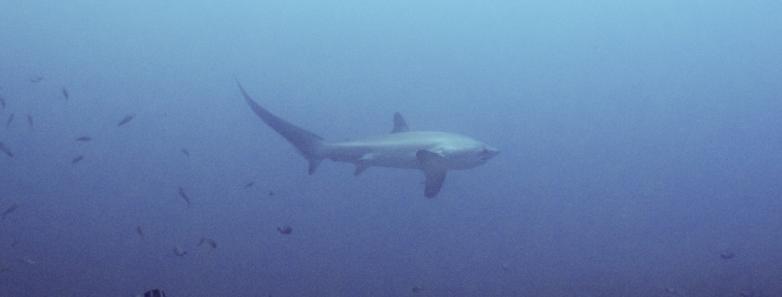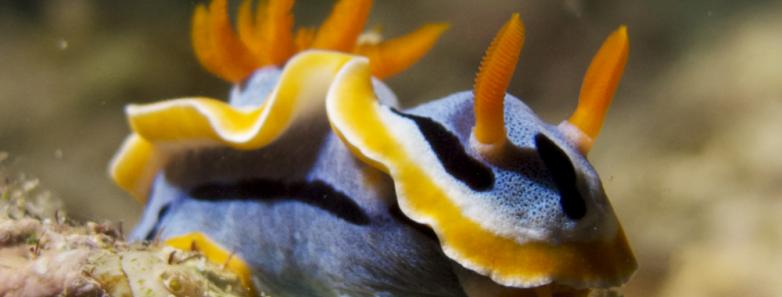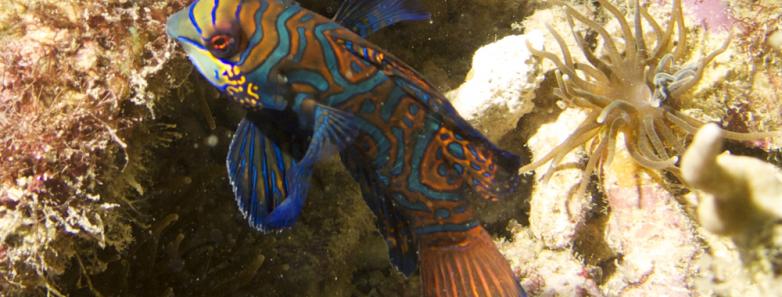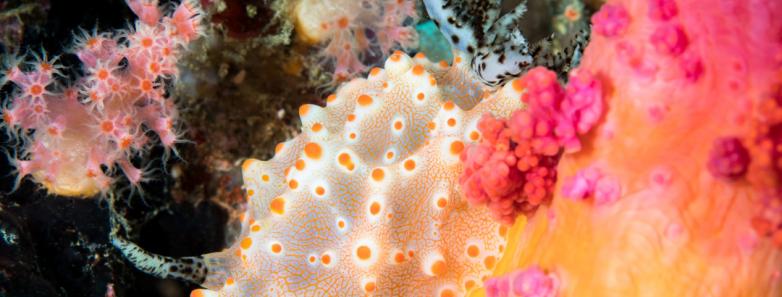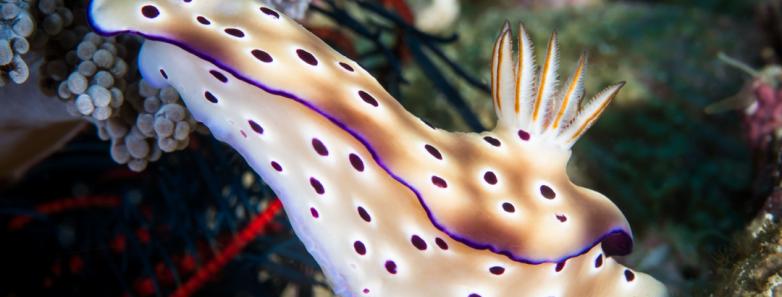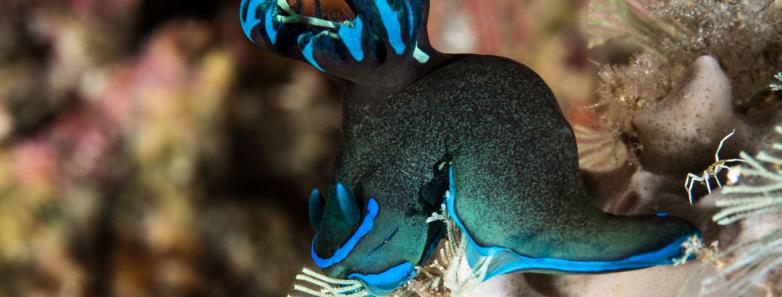Scuba Diving in Malapascua, Philippines
SCUBA DIVING MALAPASCUA HIGHLIGHTS
As the only scuba diving destination in the world that offers recreational access to thresher sharks year-round, Malapascua Island may be on the bucket-list of many a shark aficionado, however, this tiny undeveloped island also hides a wealth of healthy reefs, wrecks, and some excellent macro beyond its tropical beaches.
Jump to:
Marine Life & Environment - Best Dive Sites - Best Time to Dive - Diving Conditions
How to Get There - How to Dive Malapascua - Find a Liveaboard
MALAPASCUA DIVE RESORTS/LIVEABOARDS
Malapascua Island is diveable both from shore-based resorts and by liveaboard. The island’s white sandy beaches are home to some high-end luxury resorts for divers looking to relax and unwind in between dives.
The island is a regular highlight on liveaboard itineraries touring the Visayas, in combination with Dauin, Moalboal, and Apo Island. Alternatively, Malapascua appears on the routes of several Tubbataha liveaboard "transition" trips, scheduled at either end of the Tubbataha season between March and June.
Check out our range of liveaboards in the Philippines.
Intro to Malapascua
Malapascua Island is located on the northernmost tip of Cebu Island in the Philippines’ Visayan Sea. At only one-and-a-half miles long by just over half-a-mile wide, the island is a tiny tropical oasis with some big diving on offer. Discovered as a dive destination in the early 1990s, the island is well known for its long white sand beaches ringing a tropical interior of lush palms and a small number of hamlets.
Divers visiting Malapascua will be impressed by lush coral gardens, vibrant walls, some fascinating macro, and impressive encounters with bigger species such as sharks and manta rays. There is some reasonable wreck diving to be had here too, all within easy reach of the island’s coastline.
For another great macro destination, check out the "Macro Heaven" Anilao.
WHEN TO GO
The diving season in Malapascua is year-round. However, during the typhoon season from July to October inclement weather can cause rough surface conditions and reduced visibility.
Malapascua Diving Information
Marine Life & Photography Subjects
The world-famous thresher sharks of Malapascua are typically seen at sunrise, enjoying their morning clean at stations along Monad Shoal. Their daily routine is so predictable that divers descend to the 80ft (25m) sandy bottom and simply wait for the sharks to turn up.
However, there is far more to this tiny island than the threshers. The Malapascua dive scene is well known for its amazing macro life, with critters such as pygmy seahorses, ghost pipefish, blue-ringed octopus, seamoths, and frogfish amongst the tiny species that can be spotted on a dive here. Dusk dives will also turn up the beautiful mandarin fish, and other highlights include reef sharks, mantas, and devil rays.
Practice your ambient low light photography, as none of the dive operators allow the use of strobes while shooting thresher sharks, manta rays and devil rays at Monad Shoal.
Interested in diving with sharks? Check out our list of the Best Shark Diving in the World.
Diving Conditions
- Water Temperatures: 78°F (25°C) in January, rising to 85°F (29°C) in May.
- Visibility: 60-80ft (15-25m).
- Depth Range: 16-131ft (5-40m).
- Diving Difficulty: Suitable for all levels.
Best Dive Sites
- MONAD SHOAL - The most famous dive site at Malapascua Island, boats set-off just before the break of dawn for the plateau of Monad Shoal. Thresher Sharks hunt deep in the ocean most of the day but come up to the shallow top of Monad Shoal at 90 feet to have parasites removed by cleaning wrasse every morning. Manta rays and devil rays are also regularly spotted, and sometimes hammerheads can be seen between January to April.
- LIGHTHOUSE - Aptly named as it is close to the lighthouse, this is a great site to visit at sunset in anticipation of the mandarin fish mating dance. Seahorses, squid, and pipefish are also often seen here.
- GATO ISLAND - A little further offshore is Gato Island, where pristine reef within a protected marine reserve offers a good chance of spotting pygmy seahorses. Whitetip reef sharks and blue ring octopus are also often seen here, as well as sea snakes protected by the island’s sea snake sanctuary.
- CHOCOLATE ISLAND - This site is a must for critter hunters, with all manner of microscopic invertebrates and crustaceans waiting to be photographed. Regular sightings include flamboyant cuttlefish, pegasus seamoths, nudibranch, flatworms, cowries, octopus and a whole host of shrimp species.
BEST TIME TO DIVE MALAPASCUA
Diving in Malapascua Island is good all year round. The rainy season is mild and runs from July to December.
Travel Information
How to Get To Malapascua
Fly international to Manila’s Ninoy Aquino International Airport (MNL) with direct flights from US cities such as New York, San Francisco, and Los Angeles. Other flights from the US and mainland Europe layover at the major Asian hubs. Once in Manila, a one-hour domestic flight gets you to Mactan-Cebu International Airport (CEB), and then take a road transfer two-and-a-half hours north to Maya, before a 30-minute boat transfer out to Malapascua Island.
Liveaboards including Malapascua on their itineraries tend to depart from Cebu, Puerto Princesa, or Dumaguete, all of which are a one-hour flight from Manila.
Looking for a dive destination closer to home? Read our guide to the best diving nearby for Americans.
How to Dive Malapascua Island
There are some great dive resorts available in Malapascua, and many of the dive sites are within 30 minutes of the coast allowing for relaxed and flexible dive schedules. Many of the best dive sites are also visited by liveaboards, with boats combining either Tubbataha Reef, or a Visayas tour, with a day or two at Malapascua. It is even possible to dive with thresher sharks and whale sharks on the same trip, when boats include Malapascua and Cebu Islands on their itinerary.
Read about our trip to Malapascua and the Visayas last Feb 2019 here...
OTHER THINGS TO DO IN MALAPASCUA
Malapascua Island is relatively limited in terms of non-diving activities. There are restaurants and bars along the waterfront areas, and plenty of long sandy beaches. There are lots of great places to stay in Cebu, especially in and around Malapascua, with many of the resorts offering spa treatments and yoga classes, this is the ultimate place to relax and unwind.
Liveaboard availability
The rates shown below are per person in USD. Some of the operators quote in other currencies and the pricing at the time of booking may vary depending on the latest exchange rates.
Please contact us for the availability of the following boats: MY Resolute and Infiniti Liveaboard
Other Useful Information
Practical Information
- Currency: Philippine Peso (PHP)
- Language: Filipino and English
- Time Zone: Philippine Standard Time (GMT+8)
- Electricity: 220V
GOT QUESTIONS? READY TO BOOK?
Call us today at +1-310-915-6677 or email us bookings@bluewaterdivetravel.com
And let us book your dream vacation!
UNDERWATER IMAGES
Bluewater made a trip to Malapascua and the Visayas in 2019 on the Philippine Siren, led by Katie Yonker. Read more about it here.

